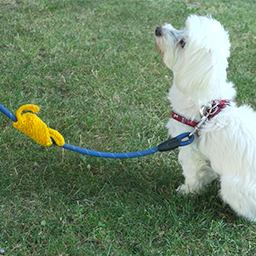Yellow ribbon
Text: Dana Rolečková (subject and inspiration – Klára Groulíková, founder of the Online Dog School), Photo: author
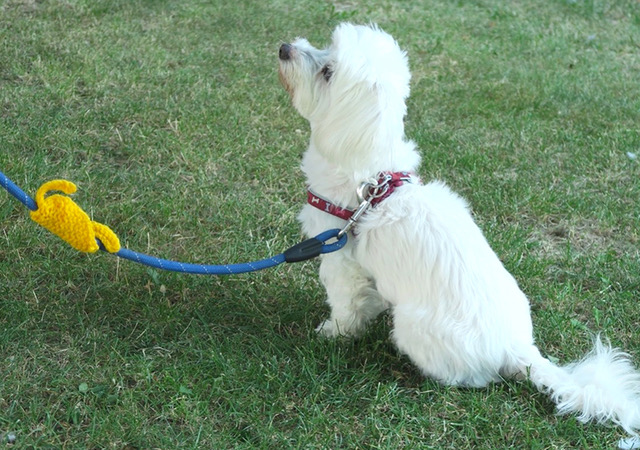
A yellow bow or ribbon indicates a dog who, for a variety of reasons, needs to be given space. The goal might be not only to protect the dog itself, but also other animals and people. The idea behind the yellow ribbon is to not expose an animal to a situation that can sometimes end up being unpleasant for both parties. This small and polite measure can in some cases have a very positive effect on taking your dog partner for a walk.
Most of us associate yellow with the Czech Day Against Cancer. The yellow ribbon or bow for dogs is not talked about so much, and some may not even know about it. This is a very useful and simple label for dogs who need special treatment.
Let’s talk about which dogs need it and which owners will appreciate it.
Examples of when to use a yellow bow:
TIMID INDIVIDUALS
Very often bows are tied to dogs who have bad memories of encounters with other dogs and humans, dogs who have been previously abused and are therefore very wary. They may require being kept at a distance from other animals and humans, even from small children.
For these dogs, the marking serves more to restrict contact until the abused dog’s soul is healed.
One small ball of mediumstrength yarn and knitting needle sizes 3.5 to 4 will do. Begin with 15 stitches and work in garter stitch (knit on RS and WS to the desired length). To make it look neat, you can fiddle with the edges and knit them as follows: At beginning of the row: K, remove with the thread in front, K (until end of row – K). At the end of the row: remove with the thread in front, K, remove with the thread in front (until end of row – K).
For small dogs, a length of about 20 cm will be sufficient, for larger breeds, approximately 30–35 cm. In the same way, you can also knit a winter scarf for your furry friend by adjusting the width and length.
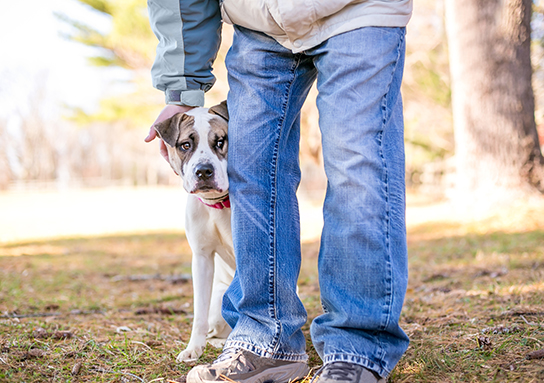
DOGS FROM SHELTERS
The yellow bow is used for dogs who need to prepare for a pleasant life in their new home.
The aim is to go for trouble-free walks on a leash and for socialization, which can be complicated – especially in dogs rescued from unsatisfactory conditions – and needs to be done gradually without exposing anyone involved to danger.
The yellow ribbon in this case will help give your dog a quiet space, and learn to behave on ordinary walks.
INJURED DOGS, SICK AND OLD DOGS
These are dogs that need a safe space to recover from injury or illness, and also dogs that are simply old.
For such animals, meeting another dog can sometimes be dangerous.
When trying to be friends and play, they may accidentally injure or otherwise harm themselves. Blind or deaf dogs can also be given a yellow ribbon to wear.
Example: You have a dog with a heart condition who shouldn’t exert themselves too much physically, but they love to play, and it‘s hard to keep an eye on them because they‘ll carry on playing until they keel over for good.
In these cases, too, wearing a bow makes a lot of sense.
FEMALES IN HEAT
Here, the dog-owner can clearly warn others that their dog is in heat and thus avoid any ‘unpleasant complications’ when out walking. The owner should naturally show consideration for others, and not walk their dog in places where there is a large concentration of dogs, so that potential ‘suitors’ are not unnecessarily stressed. It can also be usefully worn by females who have recently had puppies and whose reactions can be unpredictable.
GUIDE DOGS, SEARCH-AND-RESCUE DOGS
These dogs have other special markings, the yellow ribbon here serves as an additional notice for dogs and the general public. The purpose is to let the animal focus on its ongoing training and not to be distracted.
NON-CONTACT OR AGGRESSIVE DOG
Ribbons are a great asset with aggressive dogs. Again, animals may have been abused or attacked in the past.
A bow may not only refer to an aggressive dog, but also to owners who simply do not wish to engage in contact and to be left alone. Yes, such people do exist, and more than you might think!
Also in this case, it’s good to leave the dog some space.
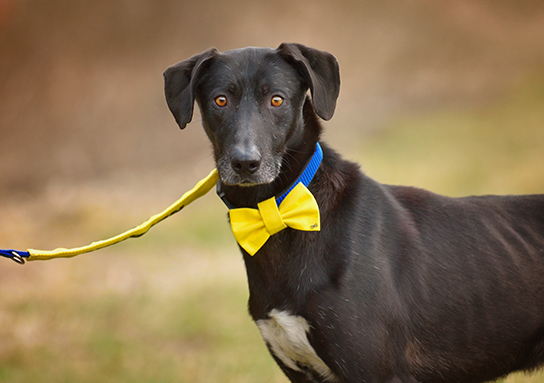
For information on other suitable preparations and their use, visit the Energy veterinary division website at energyvet.com.
Where to place the ribbon?
You can choose a clearly visible spot on the back of the collar or harness, or else the dog may have it tied around their neck like a scarf. Although in that case others may mistake it for a fashion accessory. It is therefore ideal to have it attached to a leash.
An attached ribbon will be easily visible to other owners from all sides, even at long range.
Unfortunately, the yellow ribbon/bow signal is not a well-known way to alert other owners that they are approaching a dog who requires, for whatever reason, more circumspect treatment.
Perhaps this article will contribute to making this small symbol a great help for dogs and their owners.
Author of the article
Dana Rolečková
Dana Rolečková is an alternative therapist in the field of phytotherapy and homeopathy, with many years experience in the field.
She has worked with Energy almost since it was established. In the veterinary field she focuses on old and abused dogs.
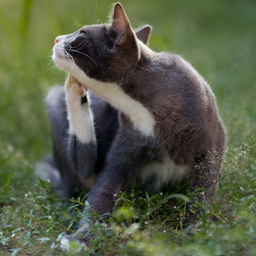
Tickvet
Tickvet is a natural veterinary product to repel bloodsucking insects, especially fleas and ticks.
Read the article

Psychosomatics in veterinary medicine
Psychosomatics is nowadays a recognized field of medicine, especially in human medicine, but also in veterinary medicine is...
Read the article
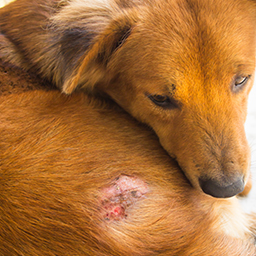
Imunovet and healing of open wounds
There are situations where it is not reasonable to put the dog under anesthesia to suture the laceration. Or situations where...
Read the article
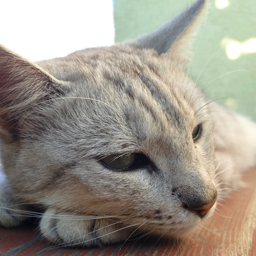
Hyperthyroidism of cats
Hyperthyroidism, or pathologically elevated thyroid function, is the second most common endocrinopathy in cats. The cause is usually...
Read the article
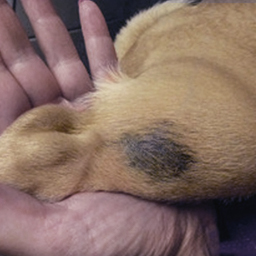
Patch after tick bite, coat renewal
The castor bean tick, Ixodes ricinus, is an arachnida known to belong to the Ixodidae family. We know...
Read the article
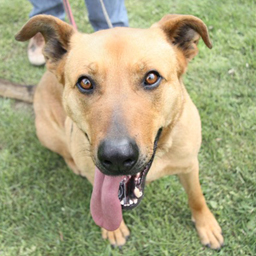
Dogs in Heat
IT’S SPRING... and with it female dogs being in heat. Or what to do with the male dog when the female dog is in heat?
Read the article
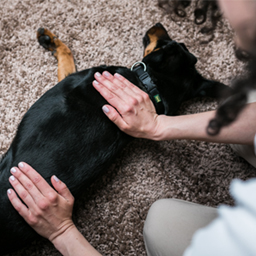
Touches that bring relief
When I first applied a butterfly massage to an animal, I believed in its power. Not by chance did I find ...
Read the article
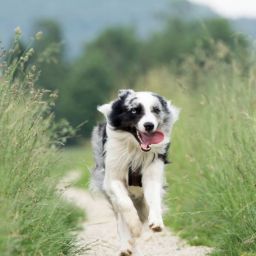
Ticks
It is spring, it is getting warmer, and we need to think about protecting our four-legged friends from ticks. And since we will now be seeing more of ...
Read the article
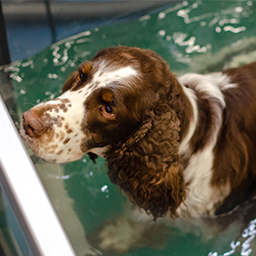
Aquatherapy / Hydrotherapy and Kingvet
Physiotherapy and rehabilitation for animals focuses on the diagnosis, treatment, and prevention of ...
Read the article
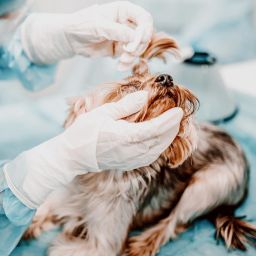
Eye examination in animals
The examination of animal eyes is very similar to the examination of human eyes and should be part of the basic examination, as general disease is associated with ocular involvement in many cases.
Read the article

Warts on puppies
Warts on young dogs are most often of infectious origin, caused by the papillomavirus. They are contagious to other dogs (not to other animal species or humans).
Read the article
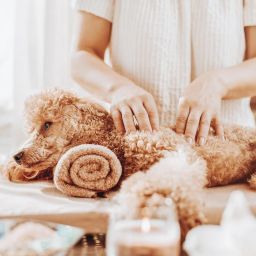
Metamorphic technique for animals
The metamorphic technique, known as butterfly massage, is a gentle harmonizing technique that is applied to the spinal reflex zones on the feet, hands and head in humans.
Read the article
